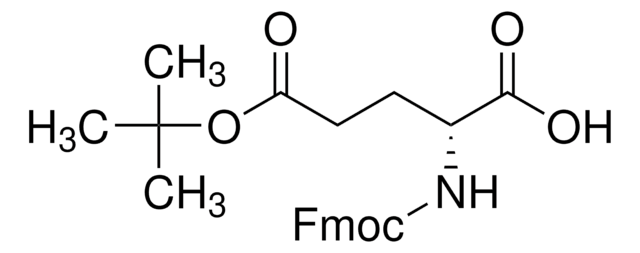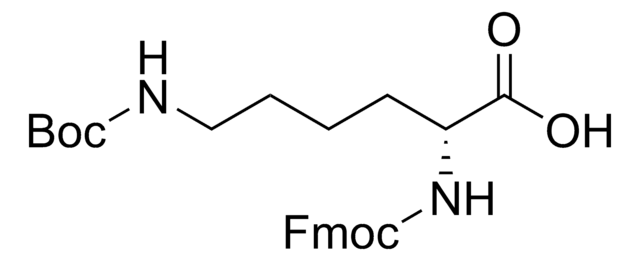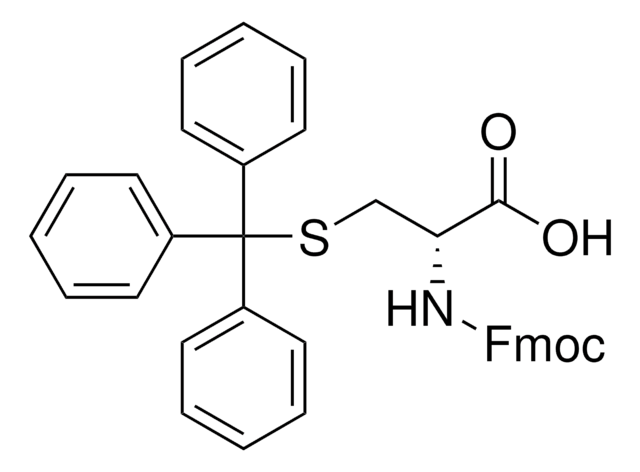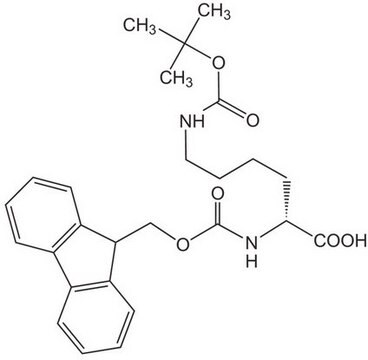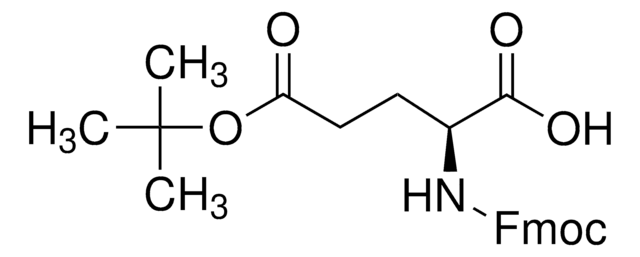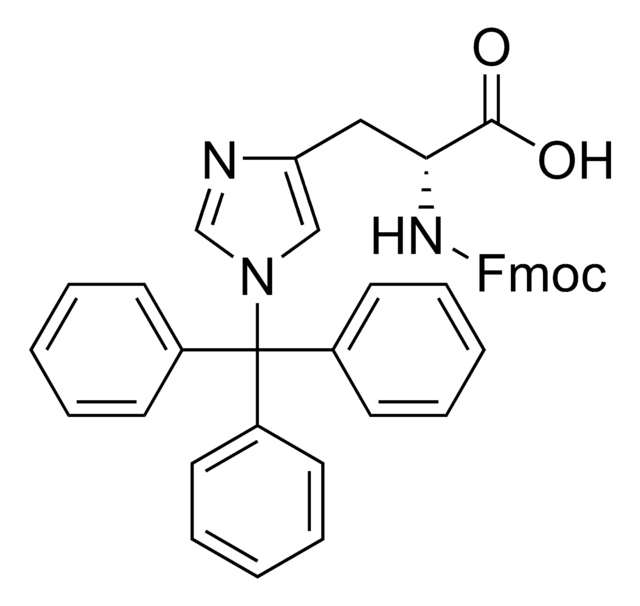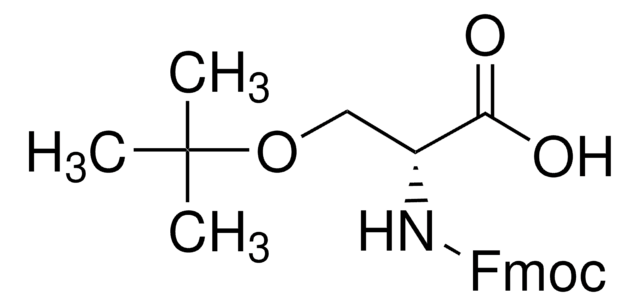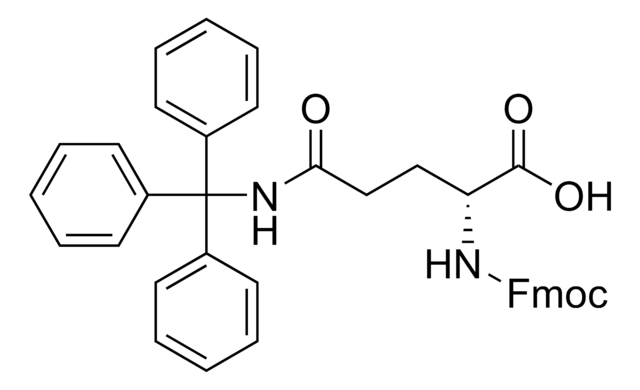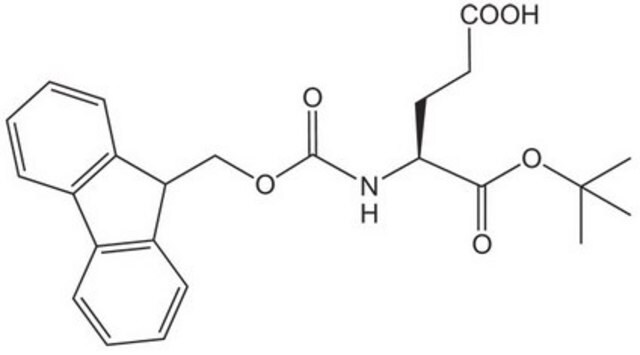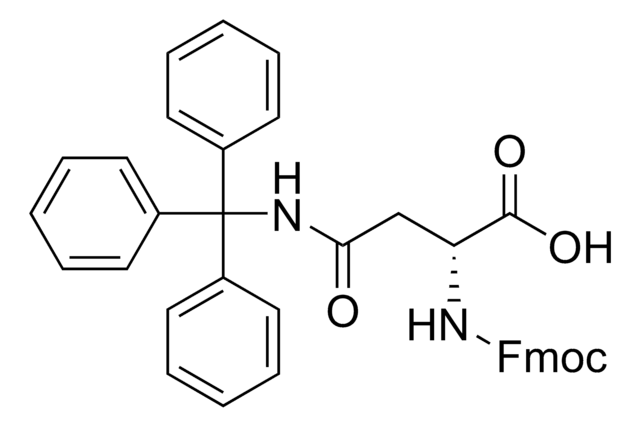8.52155
Fmoc-D-Glu(OtBu)-OH
≥98.0% (HPLC), for peptide synthesis, Novabiochem®
Synonym(s):
Fmoc-D-Glu(OtBu)-OH, N-α-Fmoc-D-glutamic acid γ-t.-butyl ester
About This Item
Recommended Products
Product Name
Fmoc-D-Glu(OtBu)-OH, Novabiochem®
Quality Level
product line
Novabiochem®
Assay
≥92.0% (acidimetric)
≥98% (TLC)
≥98.0% (HPLC)
form
powder
reaction suitability
reaction type: Fmoc solid-phase peptide synthesis
manufacturer/tradename
Novabiochem®
mp
80-95 °C
application(s)
peptide synthesis
functional group
carboxylic acid
storage temp.
2-30°C
InChI
1S/C24H27NO6/c1-24(2,3)31-21(26)13-12-20(22(27)28)25-23(29)30-14-19-17-10-6-4-8-15(17)16-9-5-7-11-18(16)19/h4-11,19-20H,12-14H2,1-3H3,(H,25,29)(H,27,28)/t20-/m1/s1
InChI key
OTKXCALUHMPIGM-HXUWFJFHSA-N
General description
Associated Protocols and Technical Articles
Cleavage and Deprotection Protocols for Fmoc SPPS
Linkage
Analysis Note
Appearance of substance (visual): powder
Identity (IR): passes test
Enantiomeric purity: ≥ 99.5 % (a/a)
Purity (TLC(011A)): ≥ 98 %
Purity (TLC(0811)): ≥ 98 %
Assay (HPLC, area%): ≥ 98.0 % (a/a)
Solubility (1 mmole in 2 ml DMF): clearly soluble
Assay (acidimetric): ≥ 92.0 %
Water (K. F.): ≤ 6.0 %
To see the solvent systems used for TLC of Novabiochem® products please click here.
Legal Information
related product
Storage Class Code
11 - Combustible Solids
WGK
WGK 3
Flash Point(F)
Not applicable
Flash Point(C)
Not applicable
Certificates of Analysis (COA)
Search for Certificates of Analysis (COA) by entering the products Lot/Batch Number. Lot and Batch Numbers can be found on a product’s label following the words ‘Lot’ or ‘Batch’.
Already Own This Product?
Find documentation for the products that you have recently purchased in the Document Library.
Articles
Aspartimide formation 1,2 is caused by repeated exposure of aspartic acid-containing sequences to bases like piperidine and can result ultimately in the generation of 9 different by-products.
Our team of scientists has experience in all areas of research including Life Science, Material Science, Chemical Synthesis, Chromatography, Analytical and many others.
Contact Technical Service